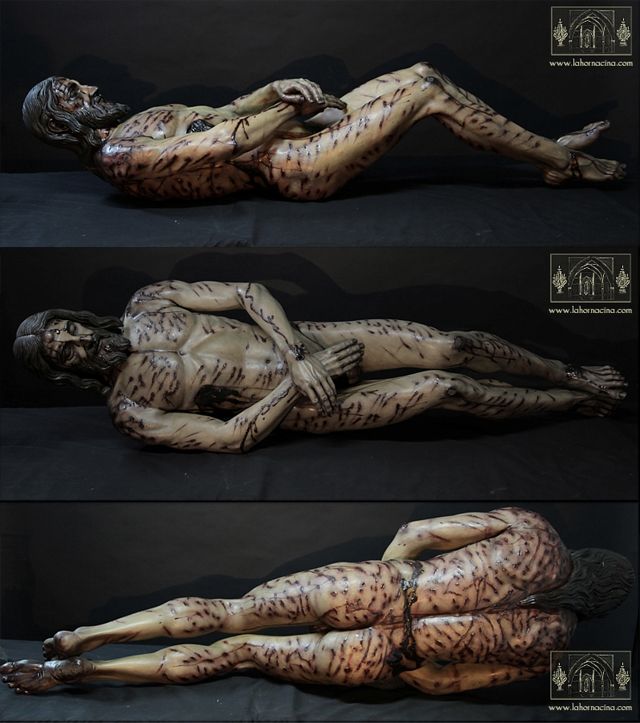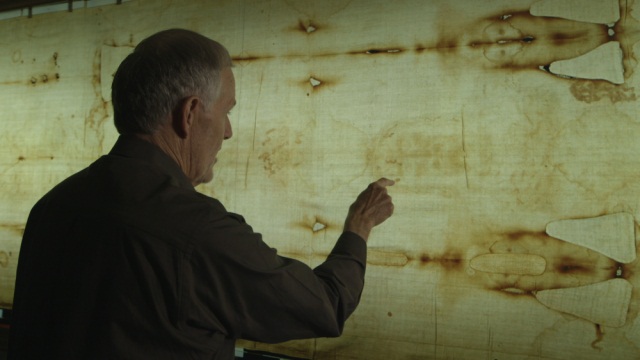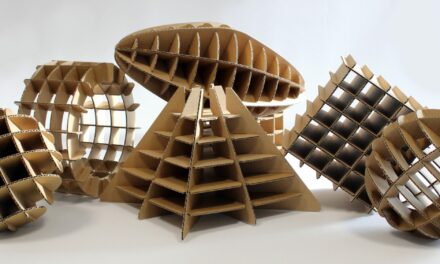In the Cathedral of St. John the Baptist in Turin, one of the most mysterious relics of Christianity is preserved, the linen veil woven with an antique herringbone pattern, on which the faint contours of a figure can be seen. During a thorough examination with modern techniques of a body print burned into the fibers of the shroud as a result of a process unknown to us, it was found that the marks identified on the figure show a close identity with those described in the New Testament suffering story.
The atheist and highly skeptical British nuclear physicist Ian Wilson was a member of the group of scientists who, with the permission of the Vatican, subjected the Shroud of Turin, considered in the Christian tradition to be the Shroud of Christ, to a thorough natural scientific investigation in 1978. Wilson, Robert Hedges, Arthur Lindt, as well as Mark Antonacci, as a result of an investigation carried out using state-of-the-art methods, determined - partly independently - that the material of the pale body contour is blood, which came from the body as extremely high-energy radiation, unknown on Earth, and most reminiscent of a neutron discharge burned into the fibers of the shroud.
As a result of all this, the skeptical nuclear physicist Ian Wilson admittedly converted and became a believer."The body in the shroud was destroyed, dematerialized, and then immediately re-materialized somewhere else, either alive or inanimate." (Physicist Giuseppe Baldachini, director of the ENA Research Center, about the examination of the shroud.)
The long journey of the Shroud from Jerusalem to the Cathedral of St. John the Baptist in Turin
The evangelists were the first to remember Jesus' death shroud in the New Testament Scriptures. The "youngest disciple", John, who was one of the first to arrive at the rock tomb upon hearing the news of the resurrection, writes the following in his Gospel: "The other disciple ran faster than Peter and reached the tomb first. He bent down and saw the lamps laid out, but did not go inside. Then Péter Simon arrived, who followed him and entered the tomb."
"He saw the sackcloth laid down and the cloth that was on his head, not placed next to the sackcloth, but in a separate place, folded. Then the other disciple entered also, who was the first to come to the tomb; he saw and believed.” (John, 20, 4-8)Máté (Lévi) also remembers Jesus' death shroud: "Joseph took off the body and wrapped it in a clean shroud." (Matthew, 15.46). In his Gospel, Mark also mentions the death shroud in which the Savior was laid: "He bought a shroud, then took Jesus down from the cross, wrapped him in the shroud and placed him in a rock-hewn tomb, and rolled a stone in front of the entrance to the tomb." (Mark, 15,46)
Apart from the New Testament Scriptures, the first known description of Jesus' death shroud comes from the 4th century. Saint Cyril AD around 340 he wrote about
that the shroud of Jesus is kept in Jerusalem as "one of the witnesses of the resurrection".
At the beginning of the 6th century, the shroud, "the image not made by human hands", was brought from Jerusalem to Edessa. The shroud was taken to Constantinople (Byzantium) in 944, where VII. Emperor Constantine placed the holy relic in the Church of Mary in Blacherna. On April 13, 1204, at the instigation of Venice, the crusaders loot and burn the city; the shroud, considered to be Christ's death shroud, is then lost.
This is how Emperor Theodoros I writes about it III. To Pope Ince: "The Venetians distributed the treasures among themselves... the French did the same with the relics and the holy shroud in which our Lord lay before the resurrection."
Several pieces of evidence indicate that in the 13th century, one of the most influential and mysterious orders of knights founded in France, the Knights Templar, came into possession of the shroud.The written record dates from 1287, in which a newly ordained Knight Templar, Arnaut Sabbatier, writes that he had to take the knight's oath on the Shroud of Christ during the knighthood ceremony.
Templar ownership of the shroud is also proven by the circumstances of the fall of the order. On Friday, October 13, 1307, IV. (Szép) On the orders of King Philip of France, the royal military in Paris and in other cities of the country attacked the Templar monasteries at the same time, and the knights were arrested on the king's orders. In order to seize the treasures of the Templars, the greedy Philip accused the knights of heresy and idolatry, for which he used the habit of swearing on the shroud as an excuse.
The shroud was owned by the House of Savoy from 1534 until 1983.
then II. Following Umberto's last will, the family donated the shroud to the Vatican. Since then, in 1983, the shroud, considered in Christian tradition to be the death shroud of Jesus, has been preserved in the Cathedral of St. John the Baptist in Turin.
A three-dimensional face emerged on the negative
The shroud, owned by the House of Savoy, was forgotten over the centuries, and only at the end of the 19th century did it become the center of interest again. In 1898, an Italian amateur photographer, lawyer Secondo Pia, took pictures of the shroud with the permission of the Italian king Umberto I. During the development of the recordings, Secondo Pia was shocked to find that on the negative of the image, a three-dimensional, bearded man's head was outlined on the glass plate. With the photographic technology of the time, it was not possible to create a three-dimensional image,
so there was no acceptable explanation for this strange phenomenon.
A few decades later, in 1931, Giuseppe Enri took pictures of the shroud again with a much more modern technique. Thanks to the modern procedure, new, previously unknown details became visible. On the body of the figure, whiplashes, nail injuries on the wrists and ankles, a spear stab wound on the chest near the heart, and traces of thorn punctures on the forehead and hairy scalp were identified.

3D body reconstruction based on the impression of the figure seen on the Shroud of Turin Source: Pinterest
The mysterious Shroud only became widely known after 1978, when British nuclear physicist Ian Wilson, one of the members of the group of scientists who conducted the first scientific study of the Shroud, published his well-known work "The Shroud of Turin". In 1978, with the permission of the Vatican, a comprehensive natural scientific examination of the shroud was carried out for the first time.
The first important finding of the research group was that the contour of the figure visible on the fabric is not of artificial origin, i.e. it is not painted.
The faint body contour is outlined by the burnt fibers of the linen cloth compressed by an unknown force. Contrary to previous ideas and the opinion of some skeptics, the pale reddish spots on the canvas that can be seen in the wounds did not come from paint, but from human blood.
It was also established that the blood residue belongs to the AB blood group, which is relatively common in the Middle East. Dr. Giovanni Tamburelli, a researcher at the University of Turin, fed the parameters of human blood into a computer to detect all traces of blood on the shroud. Using computer image enhancement, he identified traces of blood from capillaries on the face - invisible to the naked eye - and based on this
Researchers from the Italian Institute of Crystallography have identified nanoparticles on the shroud that clearly indicate that a traumatized, tortured person may have been covered with the corpse.ruled out the possibility that human hands played a role in the creation of the image.
Mysterious radiation of unknown origin that emanated from the body
The physicists involved in the investigation of the shroud were primarily interested in the problem of the creation of the contour. They also came to the unanimous conclusion that a painted origin can be ruled out; by the way, even the strongest solvent does not fade the contour, according to the experiments carried out.
No material or paint was found that could outline the body as seen on the shroud; it was clearly shown that the contours of the figure were regularly burned into the fibers of the linen fabric.
Ian Wilson compared the traces created by the thermonuclear explosion with the contour visible on the shroud and concluded that the corpse was hit for a few seconds by extremely high-energy radiation of unknown origin.
Russian nuclear physicist Belyakov had a similar opinion when he stated that
Such physical radiation is not known on Earth.
Robert Hedges (head of the radiocarbon study at Oxford) claims that the radiation that hit the shroud can best be compared to a strong neutron discharge. Historian Mark Antonacci and physicist Arthur Lind presented their research results in their jointly published scientific article entitled "Particle Radiation from the Body",
according to which the imprint of the shroud was caused by radiation that came from the body covered by the shroud.
According to the final report of the latest tests carried out between 2005 and 2010 by the research team of the Italian Radiation Physics Laboratory (ENEA), it can be ruled out that the outline of the flogged body was created by the gases of post-mortem decomposition, which begins at the body openings, 40 hours after death.
No sign of this was found,
consequently, the body could not have been covered in the shroud for more than two days.
A short-term vacuum UV radiation could similarly discolor the textile, if it had 34 million kilowatts of VUV radiation. However, such a device does not exist on earth today, and of course it did not exist in the Middle Ages either.
The research team thus also ruled out the medieval or artificial origin of the shroud. Professor Gilberto Raes, a textile expert at the University of Ghent in Switzerland, has shown that, based on its material and weaving pattern, the shroud could have been made in the 1st century in today's Palestine and Israel.
Pollen from the vicinity of Golgotha in Jerusalem between the fibers of the shroud
A total of 49 plant spores were identified from the material of the shroud, of which 14 endemic species are unique to Palestine, and eight more native plants are native only to the Dead Sea and Jerusalem area. At the 16th International Botanical Congress, held in St. Louis in 1999, they further clarified what had been established until then; two species live only and exclusively in the Jerusalem-Hebron region.
According to the researchers, the bottle-like shape could have been made from one of the thorny plants called Gundelia tournefortii.
which caused the puncture wounds shown on the forehead and top of the head of the Shroud of Turin figure.
Avinoam Danin, who is a professor of botany at the Hebrew University of Jerusalem, examined the pollen found on the shroud together with Uri Baruchhal, a pollen expert from the Israel Archaeological Survey. It was found that the pollen host of one of these only opens daily between 3 and 4 in the afternoon.
(According to the Gospel, Christ died around three o'clock in the afternoon, and because of the approaching holiday, his body was immediately removed from the cross and wrapped in the coffin.) Historical sources related to the migration of the shroud were also confirmed by botanical studies: in addition to the plants around Jerusalem, Anatolian and southern - it was also possible to detect flower pollen from France from the material of the shroud.
The full text can be read HERE!
Featured image: Pinterest












